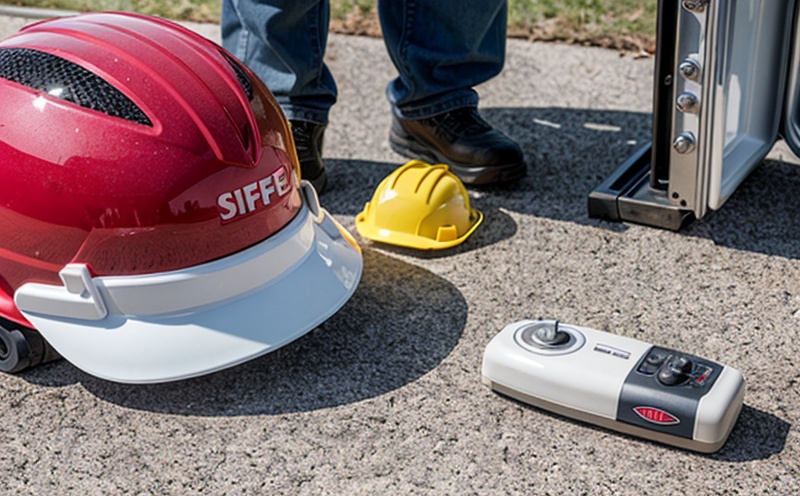ISO 18850 Two-Way VHF Radio Testing for Survival Craft
The ISO 18850 standard outlines comprehensive testing procedures for two-way Very High Frequency (VHF) radios used in survival craft. These radios are critical safety equipment required aboard ships and yachts to ensure communication with rescue services during emergencies. The testing procedure focuses on verifying the radio's functionality, reliability, and performance under various environmental conditions.
The standard is designed for two-way VHF transceivers intended for use in survival craft, which include lifeboats, liferafts, and other inflatable safety equipment. Testing involves multiple stages to ensure that the radio meets stringent operational requirements. The procedure covers both pre-shipment testing (to validate compliance with design specifications) and on-board testing (to confirm functionality after installation).
The test setup typically includes a dedicated test station equipped with a variety of instruments, including spectrum analyzers for signal strength measurement, frequency counters for precise frequency calibration, and data loggers to monitor performance metrics. The survival craft are placed in controlled environments that mimic real-world conditions such as high humidity, salt spray exposure, and extreme temperatures.
The testing process involves several key parameters:
- Frequency stability
- Signal strength
- Data transmission rate
- Battery endurance
- Error correction mechanisms
The testing protocol is designed to simulate real-world scenarios, ensuring that the radio can operate reliably under various conditions. For instance, error correction mechanisms are rigorously tested to ensure they function correctly in noisy environments. Battery endurance tests verify the device's ability to maintain power throughout extended use.
Upon completion of the testing process, detailed reports are generated, outlining all test results and any deviations from specified standards. These reports serve as critical documents for compliance purposes and can be used by quality managers and R&D engineers to identify areas for improvement in future models.
| Standard Code | Description |
|---|---|
| ISO 18850 | VHF two-way radio for survival craft |
| IEC 60942 | General technical conditions for VHF transceivers |
The testing process is not only about ensuring compliance with ISO standards but also about enhancing the overall safety and reliability of survival craft radios. By adhering to these stringent protocols, manufacturers can ensure that their products meet the highest quality benchmarks.
Applied Standards
| Standard Code | Description |
|---|---|
| ISO 18850 | VHF two-way radio for survival craft |
| IEC 60942 | General technical conditions for VHF transceivers |
Industry Applications
The application of ISO 18850 two-way VHF radio testing is primarily focused on enhancing the safety and reliability of survival craft radios used in maritime environments. This standard ensures that these critical communication devices meet stringent performance criteria, which are essential for life-saving operations.
- Maritime Safety: Ensuring reliable communication between crew members and rescue services during emergencies.
- R&D and Development: Identifying areas for improvement in future models to enhance performance and durability.
- Compliance: Meeting regulatory requirements set by international maritime bodies such as the International Maritime Organization (IMO).
| Application Type | Description |
|---|---|
| Maritime Safety | Ensuring reliable communication between crew members and rescue services during emergencies. |
| R&D and Development | Identifying areas for improvement in future models to enhance performance and durability. |
| Compliance | Meeting regulatory requirements set by international maritime bodies such as the International Maritime Organization (IMO). |
The testing process is designed to ensure that these radios not only meet but exceed the performance criteria specified in ISO 18850. This includes rigorous environmental stress tests and functional checks under various operational scenarios.
Eurolab Advantages
At Eurolab, we pride ourselves on providing world-class testing services that are tailored to meet the specific needs of our clients. Our expertise in marine and ship equipment testing ensures that you receive accurate and reliable results every time.
- Comprehensive Testing Capabilities: We offer a full range of testing services, ensuring that all aspects of your product are thoroughly examined.
- State-of-the-Art Facilities: Our laboratory is equipped with the latest in testing equipment and software, allowing us to provide precise and reliable results.
- Experienced Technicians: Our team of highly skilled technicians has extensive experience in marine and ship equipment testing, ensuring that your products are tested by experts.
We understand the importance of reliability and compliance in the maritime industry. By choosing Eurolab for ISO 18850 two-way VHF radio testing, you can be confident that your product will meet all relevant standards and regulations.





